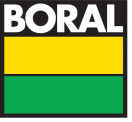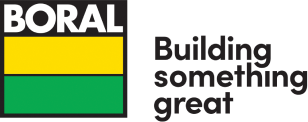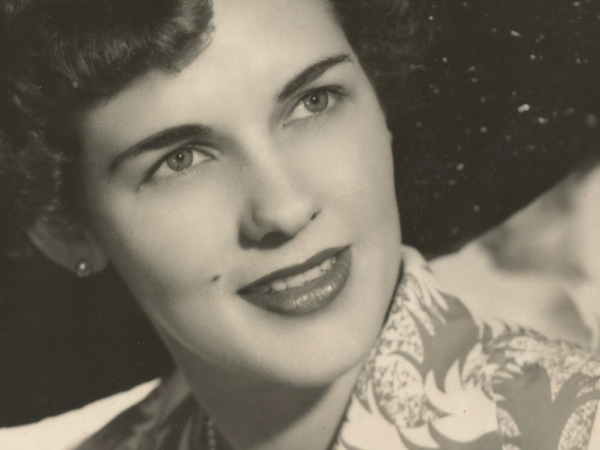In 1949, in Boral’s first year of refinery operation and trading, Patricia Morris, then aged 21, became the first female accountant to be employed by Boral, part of a team of five based at the Sydney refinery office in Matraville. She speaks to Boral about her time at Bitumen and Oil Refineries (Australia) Limited, now known as Boral, and her career since.
Boral: Can you tell us how you came to work for Boral in 1949?
Patricia Evans (nee Morris): I was the accountant for the New South Wales Golf Club at La Perouse and Boral’s Chief Accountant used to play golf there. He told me there’d be a job on the accounting team at Boral if I was looking to move.
Boral: What was it like in those early years of a new business?
Patricia: It was a good job in a new industry. Accounting to me is more than just a lot of figures because I like knowing the background of the business and what the money’s being spent on. I learned about road building, what and how much of each product is used. I also prepared the books for WB Carr Constructions, a subsidiary which was a road-building company.
These days I look at the building and repairing of roads and I’m dismayed at how quickly they deteriorate. I still remember how roads are built, how much of this component and that material makes up a section. As an accountant, I made it my duty to know where every pound or US dollar, and in later employment where every Australian dollar, was spent. Throughout my working life, I’ve always enjoyed following the process and progress of projects.
The cost accountant and I worked on the oil shipment accounts in the early days. Our office was at the top of the hill overlooking the refinery and port and we could see the tankers as they berthed, coming into Botany Bay monthly from Bahrain. I remember that in 1949 buying oil was $US2.22122828 a barrel while the general (commercial) rate was $US2.2275 a barrel.
I’m not sure why those numbers have stayed with me; perhaps it was because I really enjoyed the oil shipments as Bahrain seemed so exotic and exciting!
Boral: What are some of your fondest memories of your time at Boral?
Patricia: One recollection was the way I dressed for my interview. My favourite actress at the time was Rosalind Russell who to me was the epitome of elegance, and I thought how she dressed was the way you presented yourself. So I went for a very tailored skirt suit with a split silver fox fur stole, along with stiletto shoes. I finished my outfit with a hat and gloves which were normal ladies’ attire in the 1940s.
The Matraville Refinery had recently opened and when I saw the flames on the chimneys on my first day I thought the place was burning down. I later found out it was the cracking plant and then learned what that meant.
I also remember how we got to work. The bus for the Boral office at Matraville and refinery would leave Central Station at 8.30am. If I happened to miss the company bus I’d catch the city bus to Kingsford and then hail a passing tanker. I realise tankers these days are a lot bigger than back then but I can’t help smiling at the thought of climbing into the cab. Stilettos, pencil slim skirt as part of a tailored suit, hat and gloves... certainly not conducive to a climb. On getting seated the tanker drivers’ standard greeting to the hitch-hiking accountant would be to know if their “pay had been brought down [done]”.
Boral: What challenges do you feel you needed to overcome as the first female accountant in the office?
Patricia: : There was some objection by the male accountants until they realised I could do the job. I helped the costing accountant when needed and also looked after overseas shipments. We worked as a team.
Boral: Looking back on those years, what have been the biggest changes you’ve seen in your career?
Patricia: I had planned on a career. However I married early in 1954 and in mid-1955 my first child was born. After postponing final studies to prepare for marriage I completed my Chartered Institute of Secretaries’ course and examination in 1956. In those days most companies had a policy excluding married women from employment, though I did manage to get a small amount of work as an accountant working from home.
In 1965 at 37 years of age I applied for an accounting job, only to be rejected on the grounds that I was too old, and reminded that I was married with four children. In 1968 when I went back to work, the youngest of my children was at school. From that first interview I requested 9am to 4pm working hours to allow me to be at home for my children after school. I negotiated these hours in subsequent jobs as well. I was generally offered rather than applied for employment. When I retired in my late 60s I received a phone call from a company saying they’d heard I was no longer working and would I consider joining them as their accountant! I declined as my husband had also retired and we had plans to travel.
It’s only more recently that there’s real opportunity for job progression in an industry as part of women’s career plans. Over the years I’ve regarded my employment as accountant with various organisations more as a job rather than a career or building a career structure.
After starting as an audit clerk in 1944 I’ve worked as an accountant with a number of chartered accountancy firms, an engineering machinery company, the New South Wales Golf Club, an advertising company, Bitumen and Oil Refineries (Australia) Limited, national and international companies in the construction industry, as well as real estate and travel.
I was a volunteer in accounts for the Australian Tramways Employees Association Union. I taught accounting via correspondence to an unwed mothers’ home in the early 1960s, then from the late 1970s I was Auditor for the Australian American Association (Canberra Division) as well as Treasurer and an active fundraiser for many years for Marymead Child and Family Centre in Canberra.
These days, I still enjoy numbers and as for accounting – there’s a whole new generation of family to teach about budgets and what to look for when buying a house.


